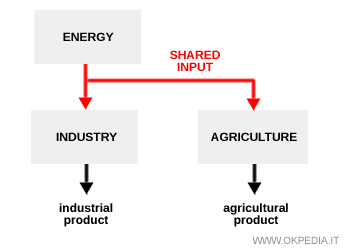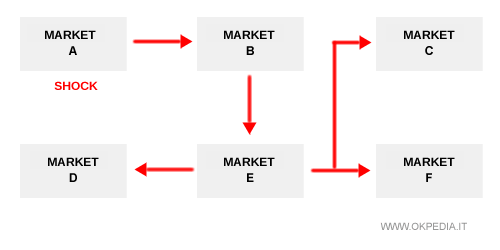Market Interdependence
Markets are inherently interconnected. No market operates entirely in isolation from the rest of the economy.
Limits of partial analysis. Partial analysis focuses on the equilibrium conditions of a single market. However, no market can truly be in equilibrium (where demand equals supply) unless the markets upstream and downstream with which it interacts are also in balance.
What drives market interdependence?
The key factors underlying market interdependence include:
- Common production factors. Nearly every production process relies on inputs that are also used across other industries. Consequently, input prices are shaped not only by demand within one market, but by the broader demand from multiple sectors.

- Substitute goods. The price of any product is influenced by price movements in its substitutes.
Example. Oil and margarine are substitute goods. If the oil market is out of balance, this instability will spill over into the margarine market - and vice versa.
- Complementary goods. The price of a product is also affected by changes in the price of its complements.
Example. Coffee and sugar are complementary goods because they are typically consumed together. If the sugar market is disrupted, it will destabilize the coffee market as well - and vice versa.
The structure of interconnected markets
In any economy, markets form an intricate web of interconnections.
The strength of these links depends on product relationships, consumption patterns, and production processes.

Together, these markets create a highly complex network of economic relationships.
A shock in one market inevitably ripples through to connected markets.

Note. If connected markets are initially in equilibrium, an external shock can disrupt this balance, setting in motion a dynamic and ongoing process of adjustment.
General equilibrium analysis
The concept of market interdependence forms the foundation of general equilibrium theory, as developed by Léon Walras and Vilfredo Pareto.
According to Walras, a system achieves general economic equilibrium (GEE) when N-1 markets are in balance.
Note. In a system of N markets, if N-1 markets are in equilibrium, the remaining market will also reach equilibrium as a result.
Market interdependence is also a key element in Say’s Law, articulated by Jean-Baptiste Say in the 19th century.
